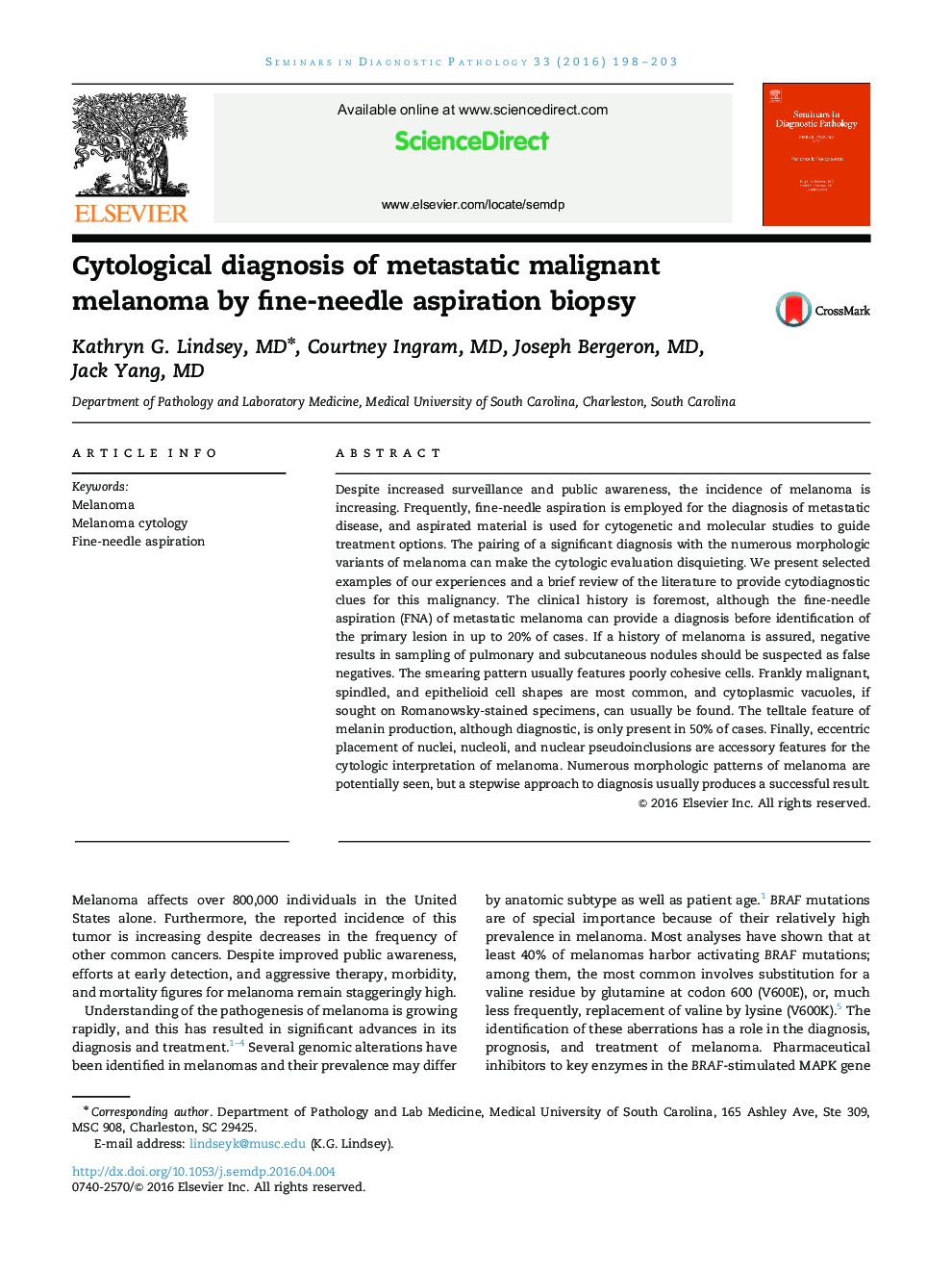| Article ID | Journal | Published Year | Pages | File Type |
|---|---|---|---|---|
| 4138160 | Seminars in Diagnostic Pathology | 2016 | 6 Pages |
Despite increased surveillance and public awareness, the incidence of melanoma is increasing. Frequently, fine-needle aspiration is employed for the diagnosis of metastatic disease, and aspirated material is used for cytogenetic and molecular studies to guide treatment options. The pairing of a significant diagnosis with the numerous morphologic variants of melanoma can make the cytologic evaluation disquieting. We present selected examples of our experiences and a brief review of the literature to provide cytodiagnostic clues for this malignancy. The clinical history is foremost, although the fine-needle aspiration (FNA) of metastatic melanoma can provide a diagnosis before identification of the primary lesion in up to 20% of cases. If a history of melanoma is assured, negative results in sampling of pulmonary and subcutaneous nodules should be suspected as false negatives. The smearing pattern usually features poorly cohesive cells. Frankly malignant, spindled, and epithelioid cell shapes are most common, and cytoplasmic vacuoles, if sought on Romanowsky-stained specimens, can usually be found. The telltale feature of melanin production, although diagnostic, is only present in 50% of cases. Finally, eccentric placement of nuclei, nucleoli, and nuclear pseudoinclusions are accessory features for the cytologic interpretation of melanoma. Numerous morphologic patterns of melanoma are potentially seen, but a stepwise approach to diagnosis usually produces a successful result.
